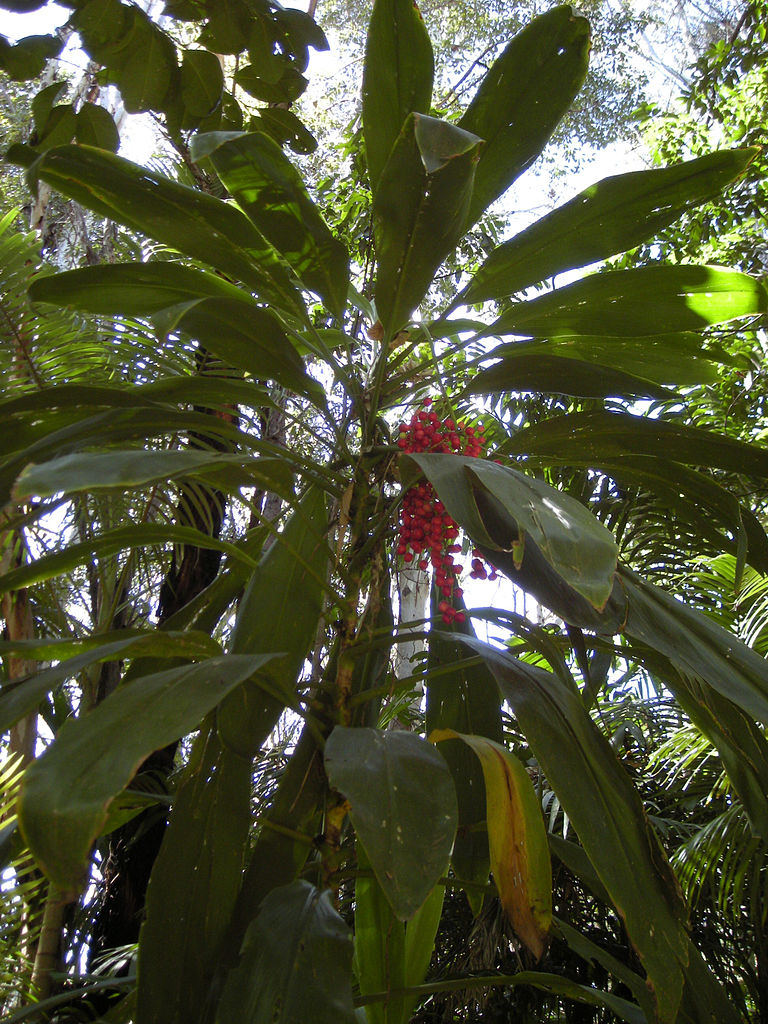
Native in the Pacific Islands s. of Guam, but apparently introduced into Guam, as is apparent from the local use of a Spanish, rather than a Chamorro, name. Widely cultivated and polymorphic, with many attractive color forms. The plants flower seldom and fruit rarely. They are however easily grown from cuttings. The roots yield a sweet extract, which may be fermented, or further distilled; the resulting liquor is the "okole-hao" of Hawaii. Agana (5101).
Safford, following the renegade American Nomenclatural Rules, used the generic name Taetsia for this plant, and called Sanseviera by the present name Cordyline. This usage is not sanctioned now.
Cordyline fruticosa is probably native to tropical Asia, but is now widely distributed across the Pacific and is cultivated throughout the tropics and subtropics. It was an ancient introduction to Polynesia, where a number of local varieties have long been cultivated, and is now completely naturalized in Tonga as an understory shrub of primary and disturbed forests. The ti plant has, since ancient times, played a large part in the Polynesian material culture. The leaves are or were commonly employed in making skirts, dance costumes, roofing thatch, food wrappers, sandals, ropes, and nets. Also of importance was the large, sugar-laden, tuberous root that was baked in underground ovens. The plant is a sparsely branching shrub up to 5 min height, growing from an enlarged tuber. The spirally arranged leaves are in clusters at the ends of the stems, and have a lanceolate to oblong blade 30‒70 cm long with the parallel veins forming a shallow angle with the midrib. The flowers are in compound spikes with a leaf-like bract at the base. The three petals and three sepals are similar, 8‒14 mm long, and white, pink, or purple in color. The fruit is a globose, 3-parted berry up to 8 mm in diameter and red to purple at maturity.
Copyright ©2018. This project is managed by the St. George Village Botanical Garden and the portal development is powered by Symbiota software. Usage Policy.


